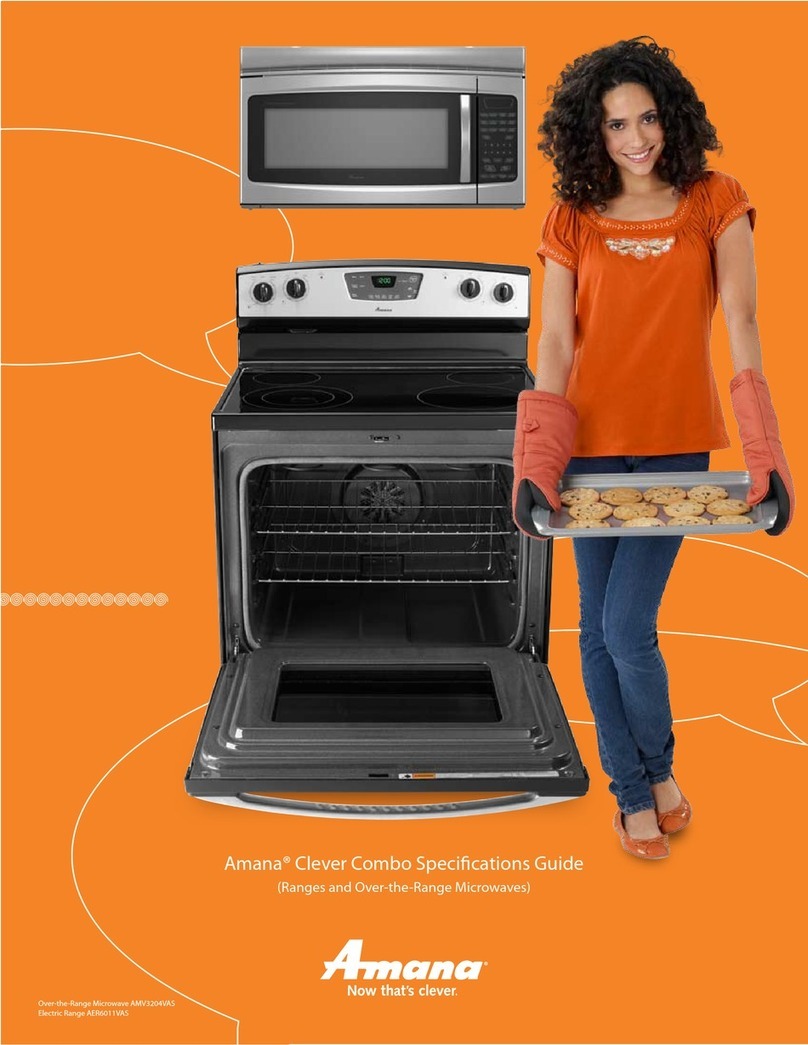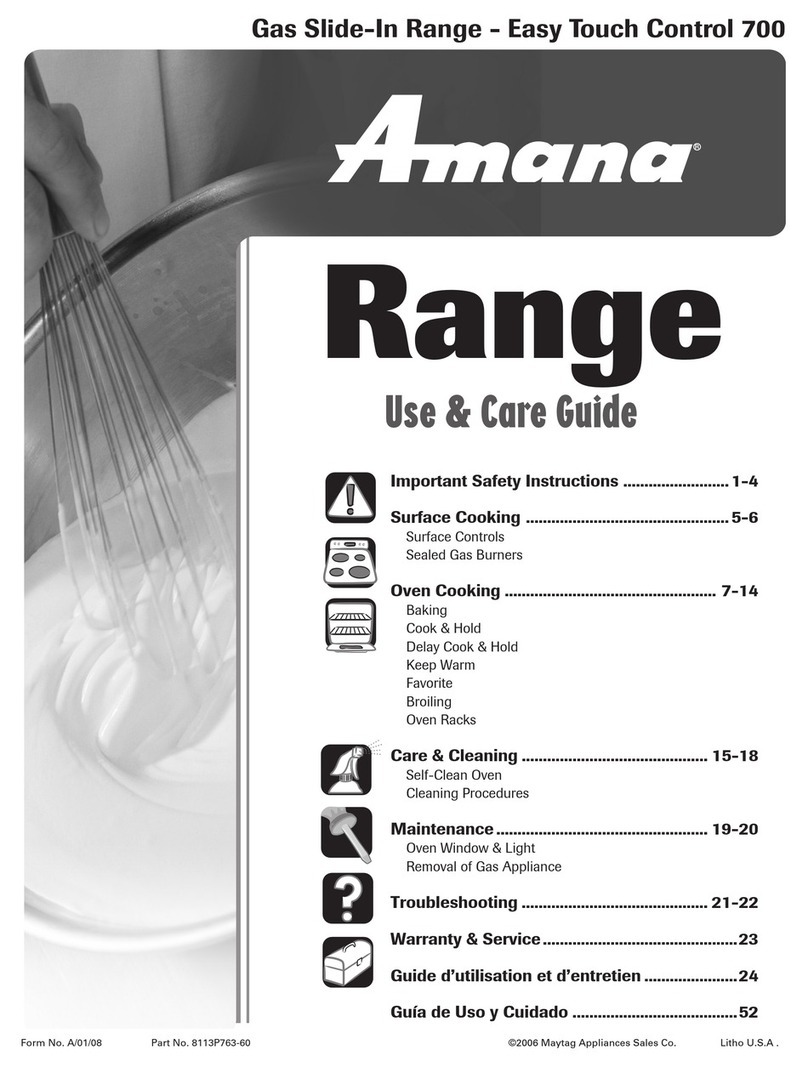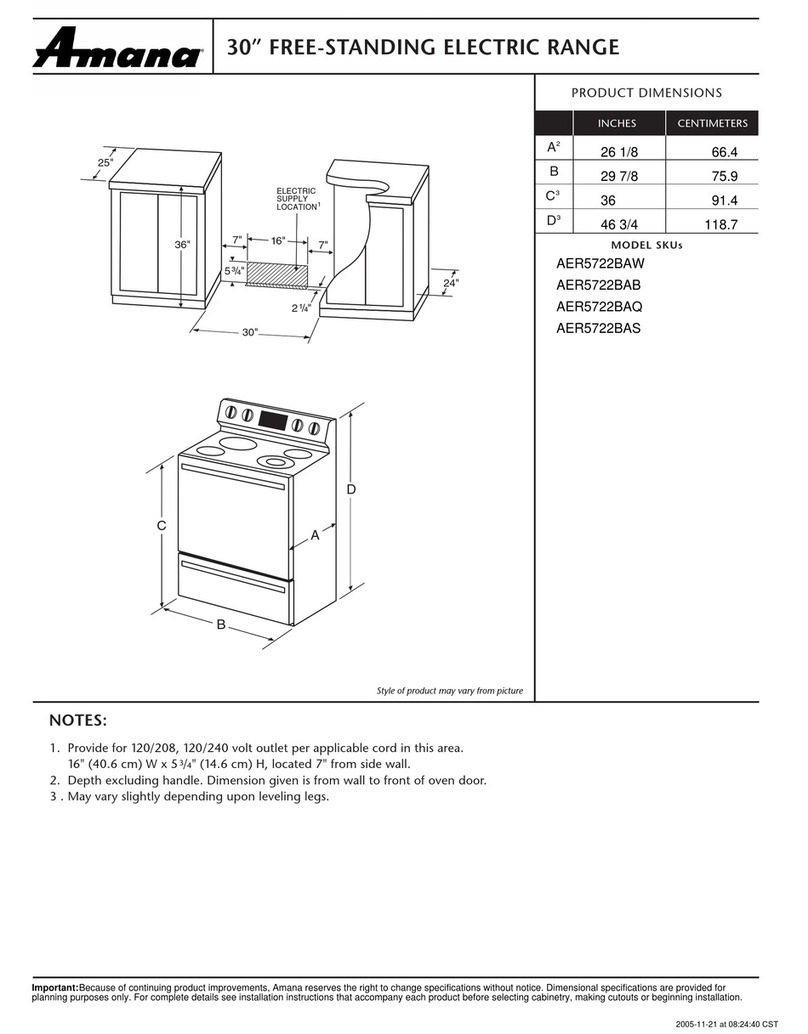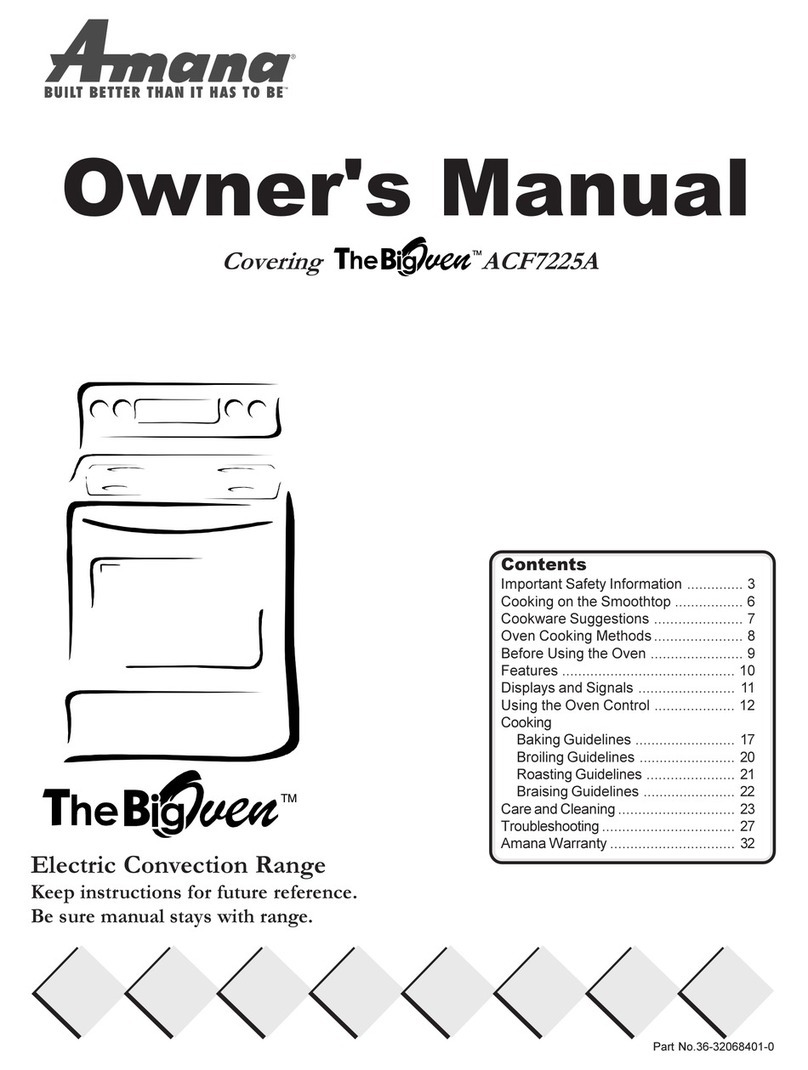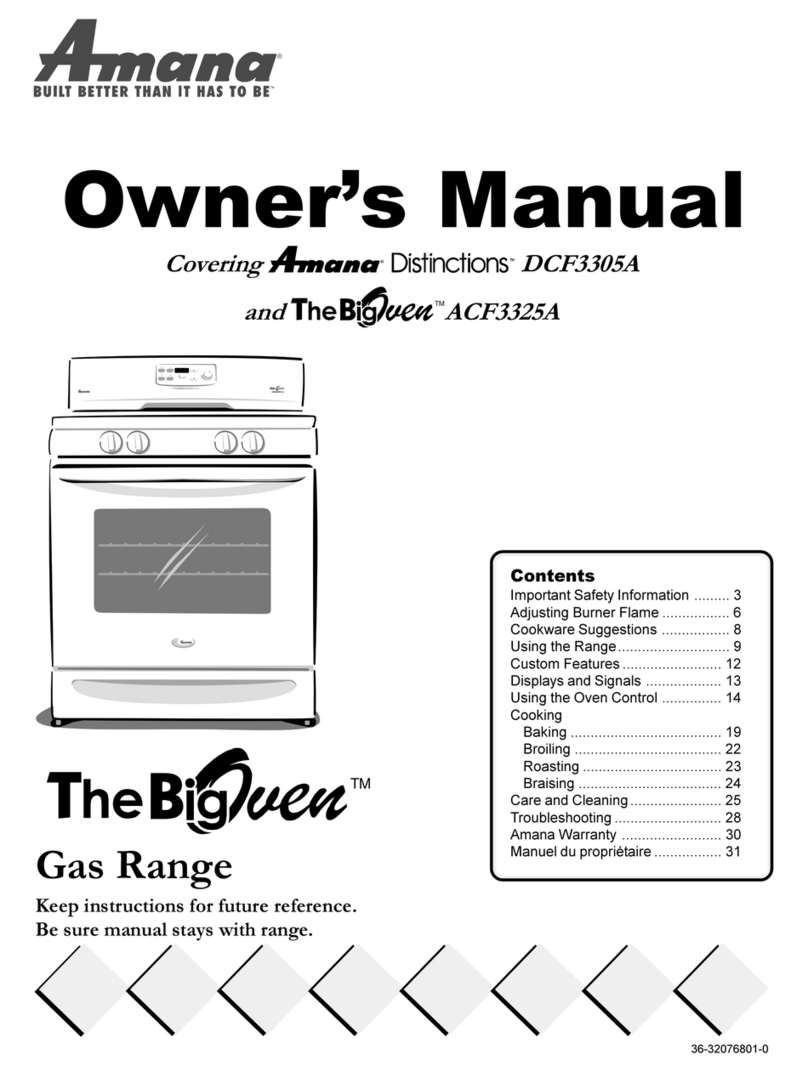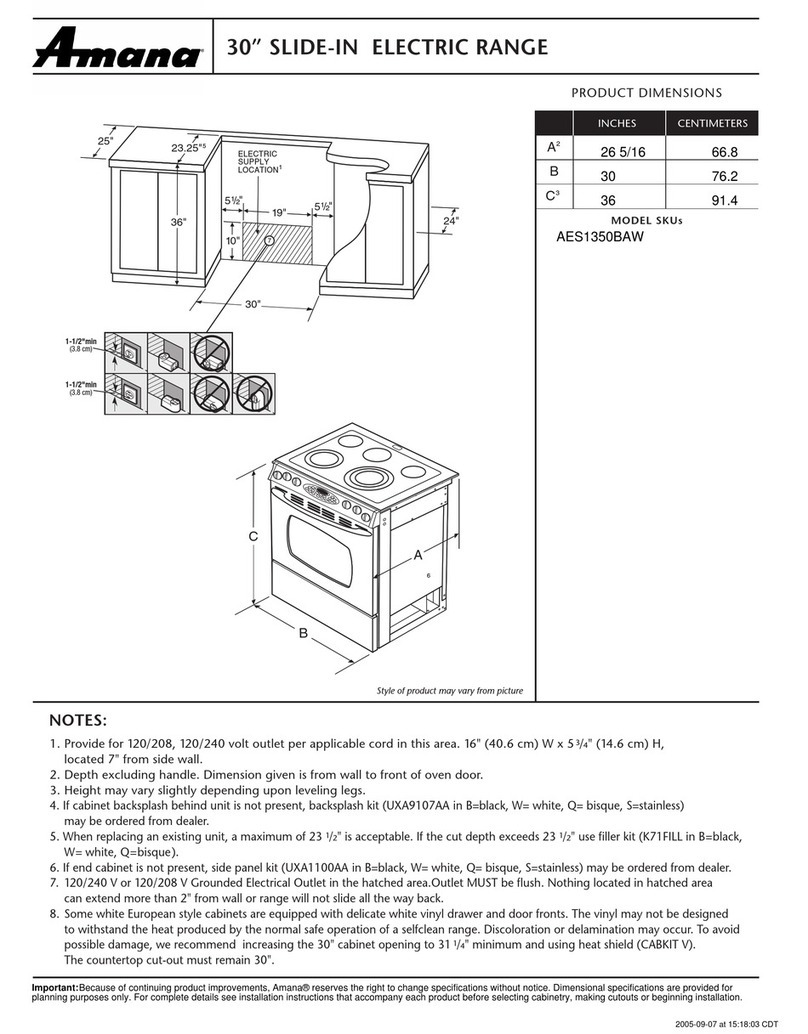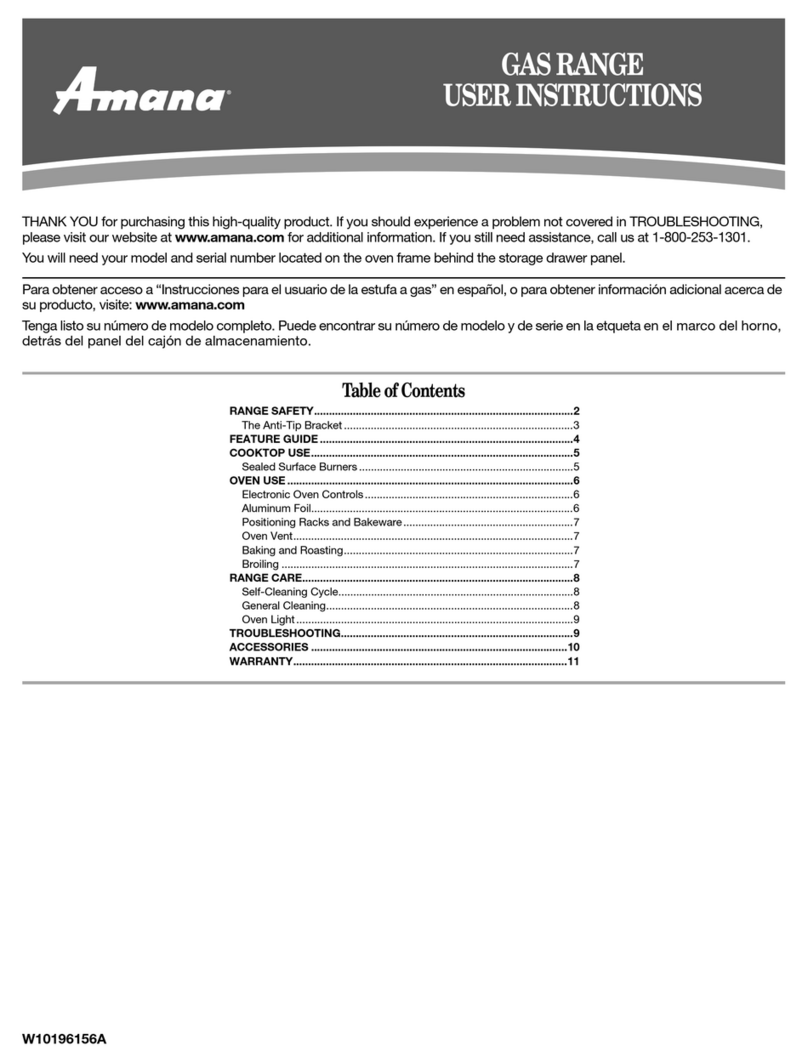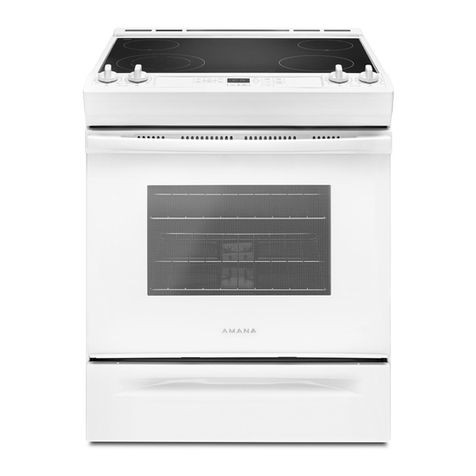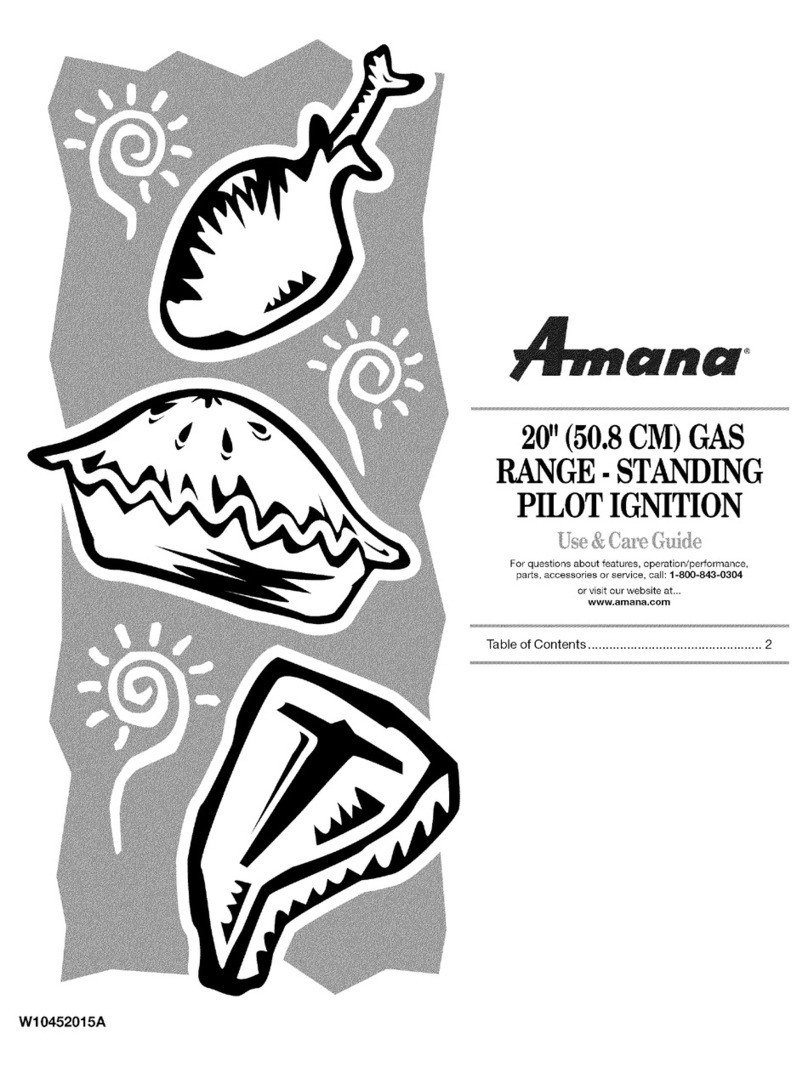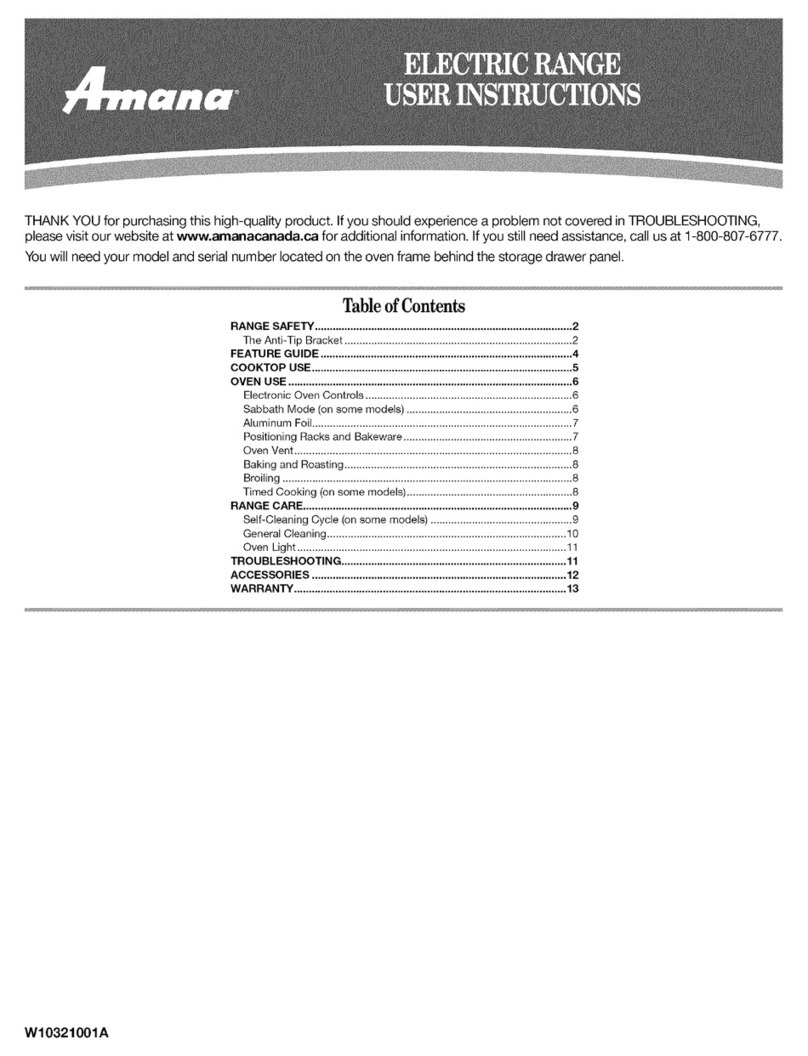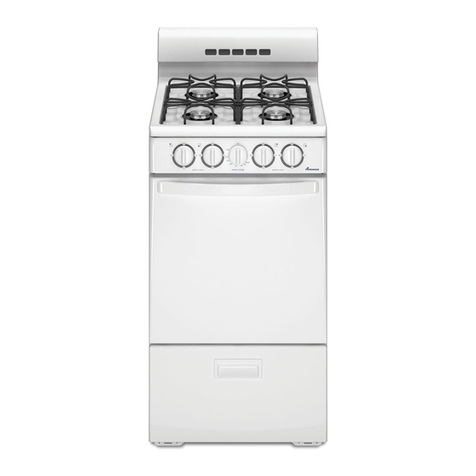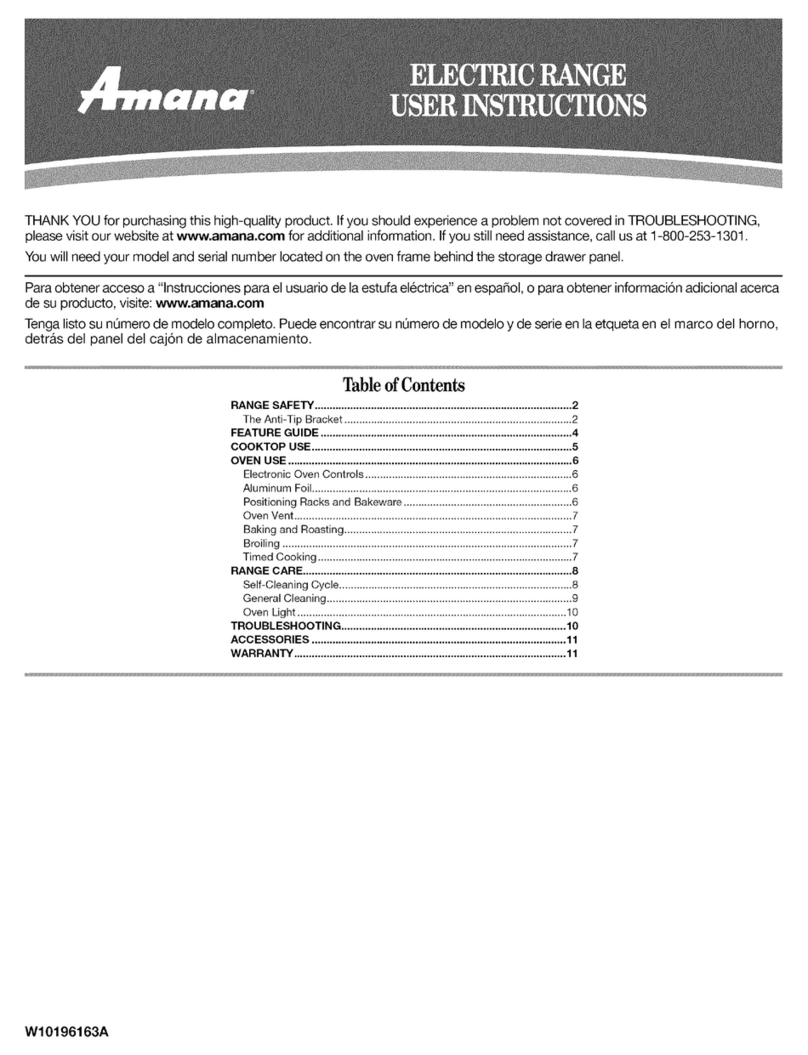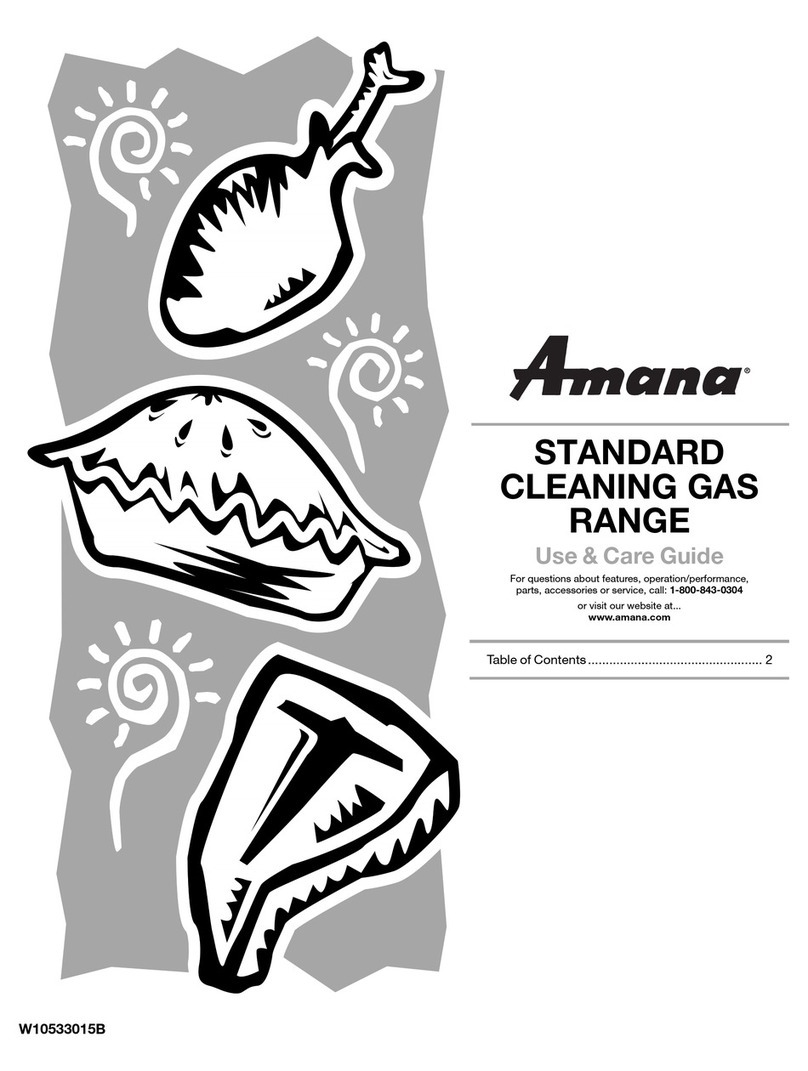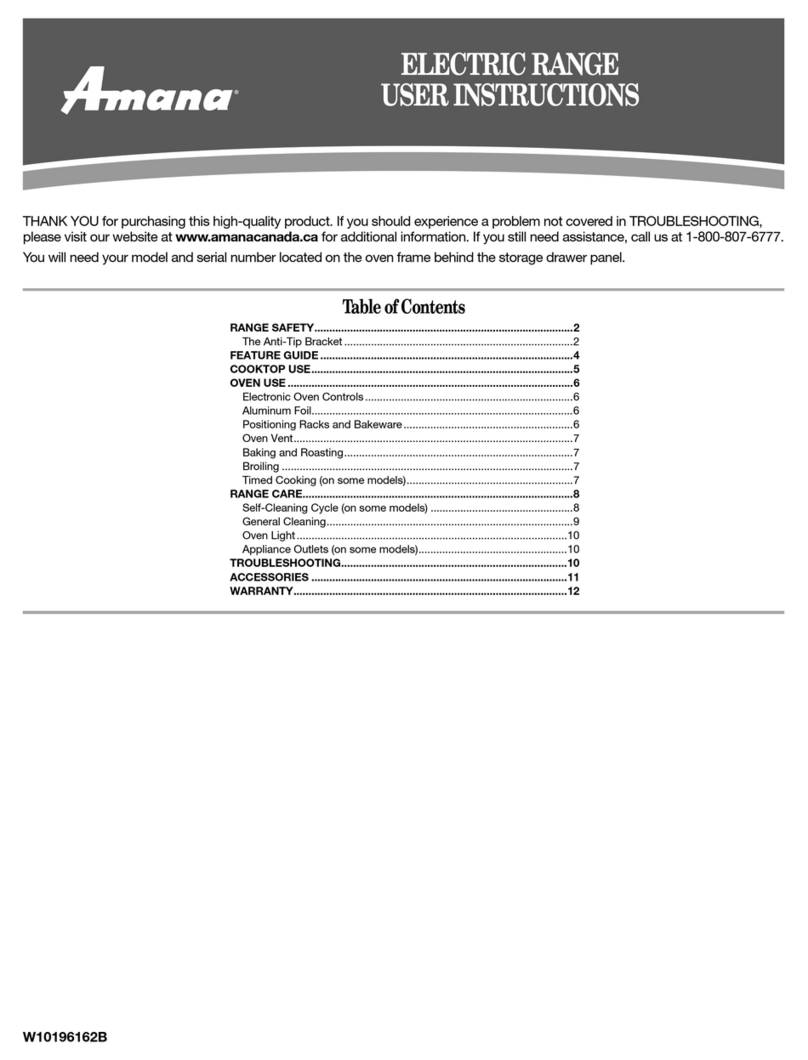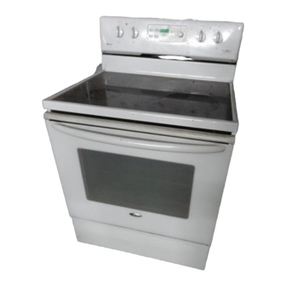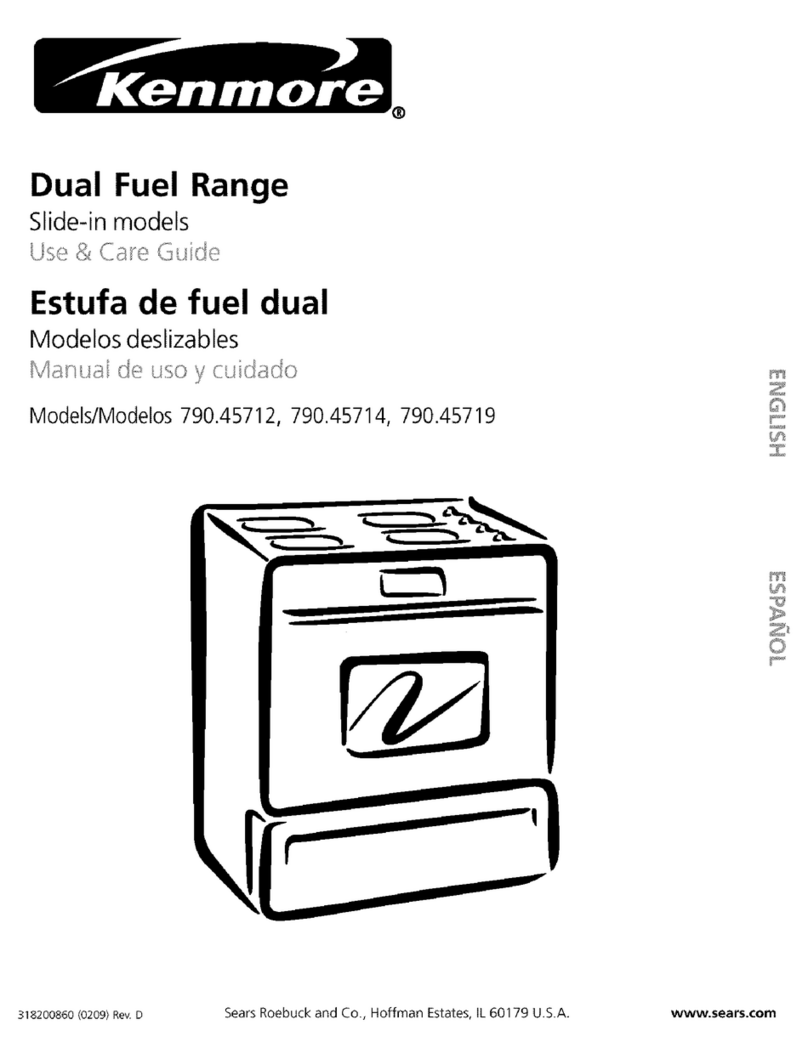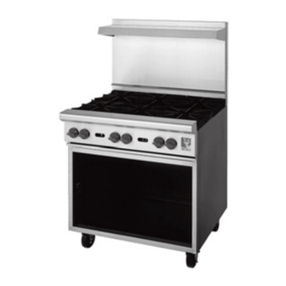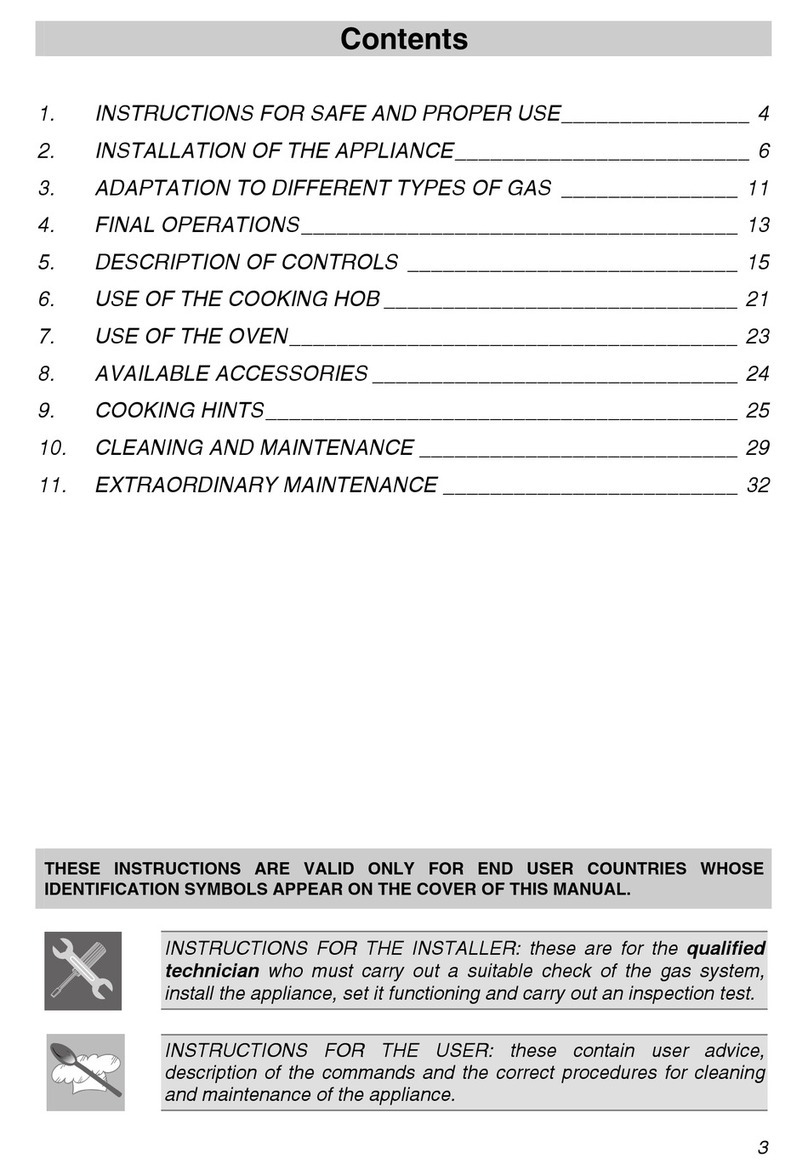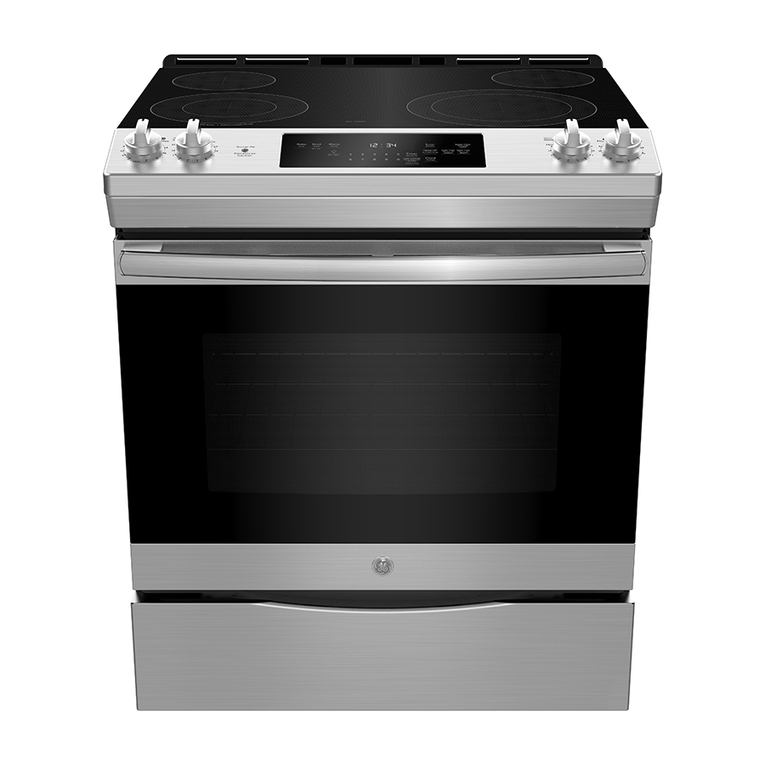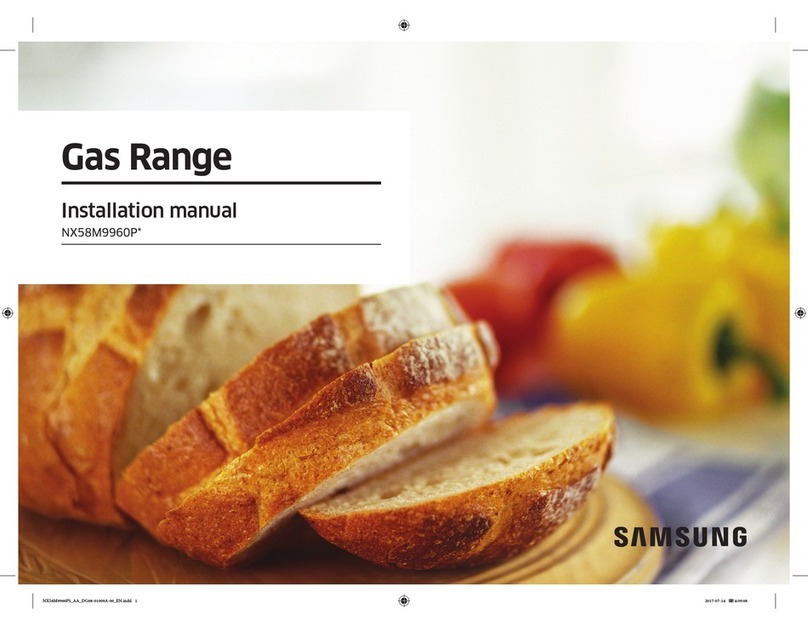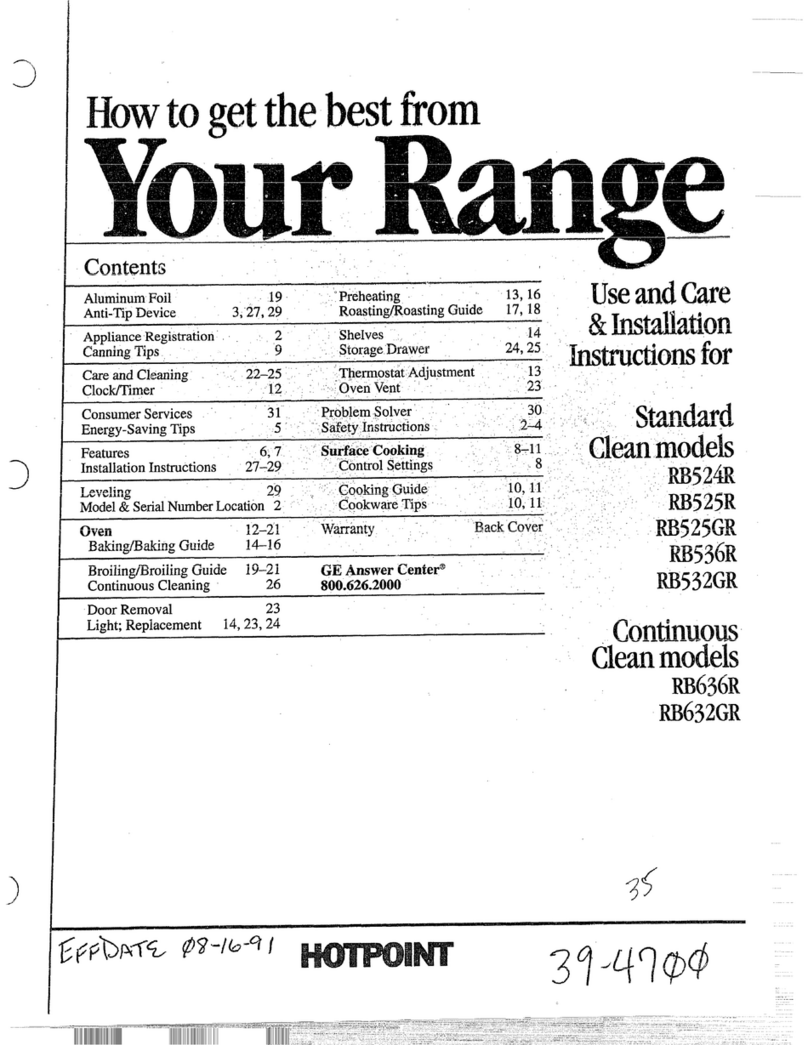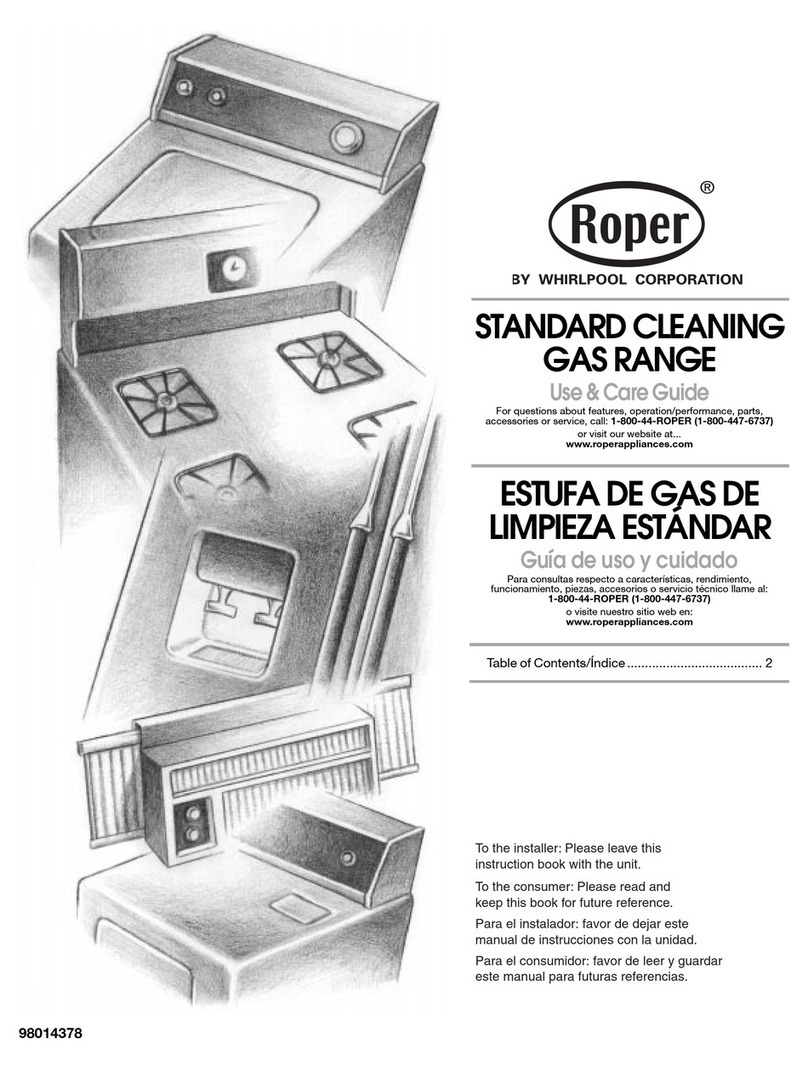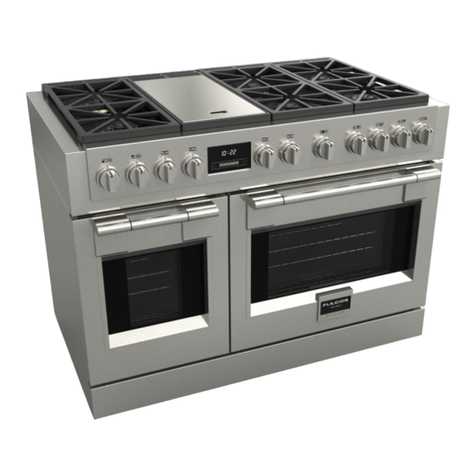
2
Contents
ModelIdentification ....................................................2
ImportantSafety Information
ALL APPLIANCES.................................................. 3
SURFACECOOKINGUNITS .................................. 4
GLASS/CERAMICCOOKING SURFACES ............. 4
OVENS................................................................... 4
SELF-CLEANINGOVENS ...................................... 4
VENTILATIONDUCTS............................................. 4
In Case ofFire ........................................................ 4
Precautions ............................................................ 4
Installation
Packing Material ..................................................... 5
RangeLocation ....................................................... 5
CabinetOpening ..................................................... 5
MinimumClearancestoCombustibleSurfaces ....... 5
IrregularCabinet andCountertopHeights ................ 6
LineVoltage Requirements ..................................... 6
PowerSupply Location ........................................... 6
PowerCordRequirements ...................................... 6
Range Terminal Block ............................................. 6
Installing3-Wire Power Cord ................................... 7
Installing4-Wire Power Cord ................................... 8
Converting3-Wire to 4-WirePowerCord ................. 9
Anti-tip BracketInstallation ..................................... 9
LevelRange ............................................................ 9
RemovalandReplacementof Range ....................... 9
Operation
ARTC7511Range Features ..................................... 10
Preparing toCook withSmoothtop Elements .......... 10
Cooking withSurface Elements .............................. 11
Cooking withDual Radiant Element ........................ 11
Cooking Utensils..................................................... 12
OvenCookingMethods ........................................... 13
Electronic OvenControl andOven Switches............ 14
Setting Clock .......................................................... 16
Setting Minute Timer............................................... 16
Prepare for Bake,Timed Bake, andDelayed Bake.. 16
Bakingor ConvectionBaking .................................. 18
TimedBaking or Timed Convection Baking.............. 18
DelayedBaking orDelayed ConvectionBaking ....... 19
Broiling orConvection Broiling ................................. 19
Dehydration ............................................................ 20
Preparefor Self-cleanand
DelayedSelf-clean Cycle ........................................ 21
Self-cleaning ........................................................... 21
DelayedSelf-clean Cycle ........................................ 21
CookingGuide
BakingGuide .......................................................... 22
Poultry RoastingGuide ........................................... 22
Beef and PorkRoasting Guide ................................ 23
BroilingGuide ......................................................... 23
ConvectionBaking Guide ........................................ 24
ConvectionBroilingGuide ....................................... 24
ConvectionPoultry Roasting Guide ......................... 25
ConvectionBeef and Pork Roasting Guide .............. 25
CareandCleaning
RemovingOvenDoor ............................................... 26
RemovingStorageDrawer ....................................... 26
ReplacingOvenLight .............................................. 26
Cleaning.................................................................. 27
CleaningSmoothtop Rangetop................................ 28
BeforeCalling forService............................................29
Warranty ....................................................................30
QuickReference Instructions .....................................32
Model Identification
Completeenclosedregistrationcardandpromptlyreturn.
If registration card is missing, call Consumer Affairs
Departmentat 1-800-843-0304 inside U.S.A.
319-622-5511outside U.S.A. When contacting Amana,
provideproduct information located onrating plate.Rating
plateislocatedon the oven frame. Record the following:
ModelNumber: ______________________________
ManufacturingNumber: ________________________
SerialorS/NNumber: _________________________
Dateof purchase:_____________________________
Dealer’sname and address: ____________________
__________________________________________
__________________________________________
Parts and Accessories
Purchasereplacement parts and additional accessories
(e.g.,refrigerator shelves, dryer racks,or cooktop
modules)overthe phone. Toorder accessories for your
Amanaproduct, call 1-800-843-0304 inside U.S.A.or
319-622-5511outside U.S.A.
Service
Keepa copy of sales receipt forfuture reference orin
case warranty service is required. Any questions or to
locatean authorized servicer,call1-800-NAT-LSVC
(1-800-628-5782)inside U.S.A.319-622-5511outside
U.S.A.Warranty service must beperformed by an
authorizedservicer. Amana, also recommends contacting
anauthorized servicer if service is required after warranty
expires.
Asure™ Extended Service Plan
Amanaofferslong-term service protection for this new
range. Asure™ Extended Service Plan is specially
designedtosupplementAmana’sstrong warranty.
Thisplancoversparts,labor,andtravelcharges.
Call1-800-528-2682forinformation.
